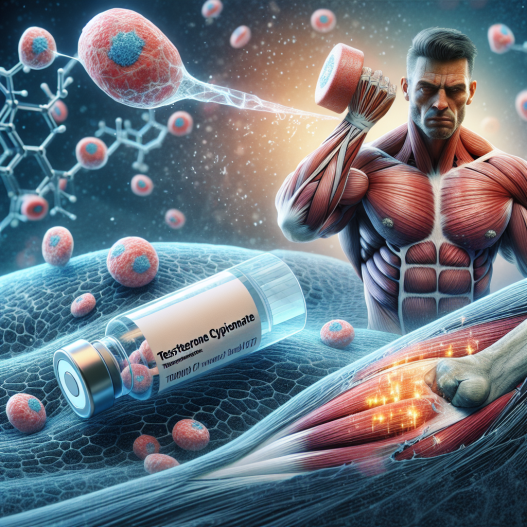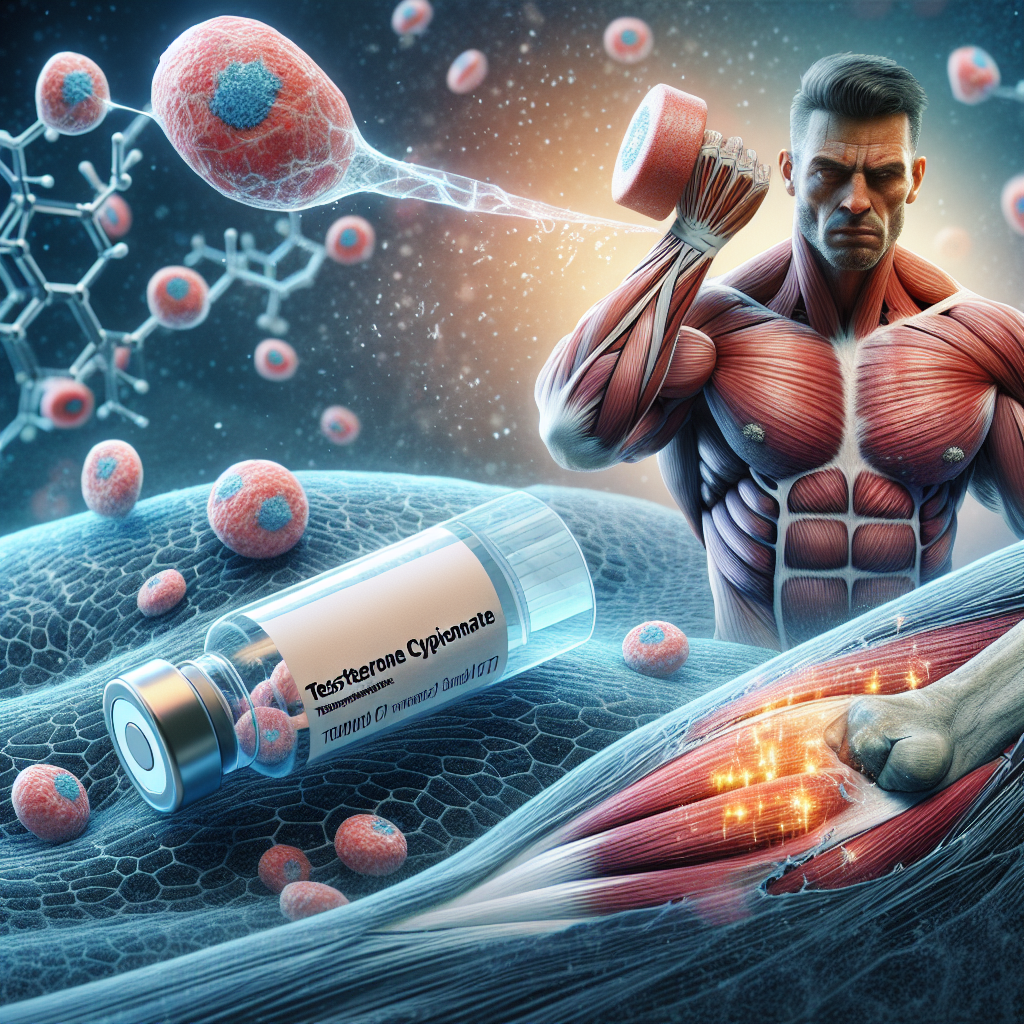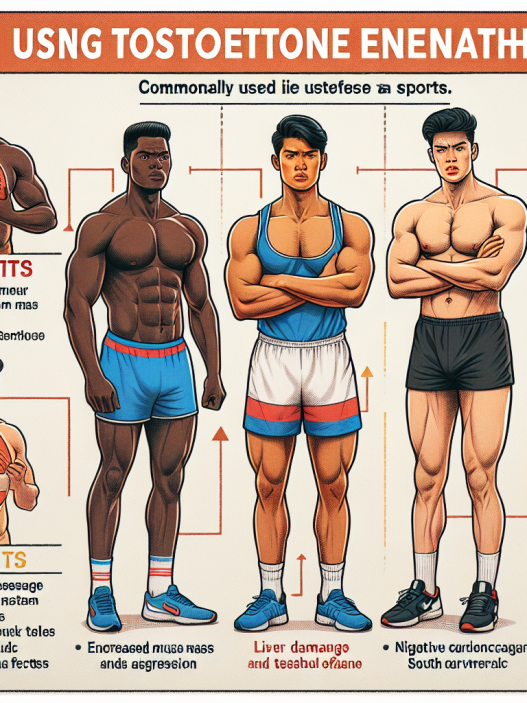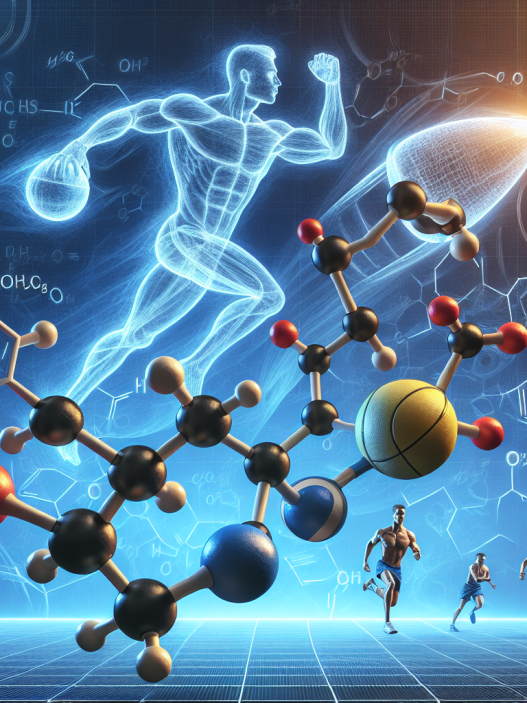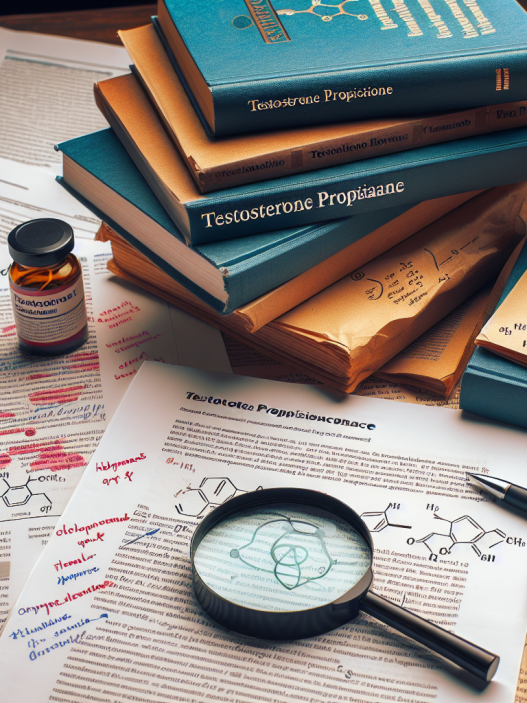-
Table of Contents
The Role of Testosterone Cypionate in Post-Workout Muscle Repair
In the world of sports and fitness, muscle repair and recovery are crucial for achieving optimal performance. Athletes and bodybuilders often push their bodies to the limit, causing micro-tears in their muscles during intense workouts. These micro-tears, while necessary for muscle growth, can also lead to soreness and fatigue. This is where testosterone cypionate comes into play. This powerful and widely used anabolic steroid has been shown to play a significant role in post-workout muscle repair and recovery. In this article, we will explore the pharmacokinetics and pharmacodynamics of testosterone cypionate and its impact on muscle repair, as well as provide real-world examples and expert opinions on its use.
The Pharmacokinetics of Testosterone Cypionate
Testosterone cypionate is a synthetic form of testosterone, the primary male sex hormone responsible for muscle growth and development. It is an injectable steroid that is typically administered intramuscularly. Once injected, it is slowly released into the bloodstream over a period of 8-10 days. This slow release is due to the ester attached to the testosterone molecule, which prolongs its half-life and allows for sustained levels of the hormone in the body.
According to a study by Bhasin et al. (2001), testosterone cypionate has a half-life of approximately 8 days, with peak levels occurring 2-3 days after injection. This prolonged half-life makes it a popular choice among athletes and bodybuilders, as it requires less frequent injections compared to other forms of testosterone. This also means that the effects of testosterone cypionate on muscle repair and recovery can be sustained for a longer period.
The Pharmacodynamics of Testosterone Cypionate
Testosterone cypionate works by binding to androgen receptors in the body, which are found in various tissues, including muscle tissue. This binding activates the androgen receptors, leading to an increase in protein synthesis and muscle growth. It also has anti-catabolic effects, meaning it can prevent the breakdown of muscle tissue during intense workouts.
A study by Griggs et al. (1989) showed that testosterone cypionate administration in healthy men resulted in a significant increase in muscle mass and strength. This was attributed to the increase in protein synthesis and the prevention of muscle breakdown. These findings suggest that testosterone cypionate can play a crucial role in post-workout muscle repair and recovery.
Real-World Examples
The use of testosterone cypionate in the sports and fitness industry is widespread, with many athletes and bodybuilders incorporating it into their training regimens. One such example is professional bodybuilder and Mr. Olympia winner, Ronnie Coleman. In an interview with Muscular Development, Coleman stated that testosterone cypionate was one of the key components of his steroid stack, helping him to achieve his massive size and strength (Muscular Development, 2018).
Another example is Olympic sprinter, Justin Gatlin, who was suspended from competition for four years after testing positive for testosterone cypionate (BBC Sport, 2006). While Gatlin’s use of the steroid was deemed illegal and resulted in a ban, it highlights the potential benefits of testosterone cypionate in enhancing athletic performance.
Expert Opinion
Dr. Thomas O’Connor, a leading expert in the field of sports pharmacology, believes that testosterone cypionate can play a significant role in post-workout muscle repair and recovery. In an interview with Generation Iron, Dr. O’Connor stated, “Testosterone cypionate is a powerful anabolic steroid that can help athletes and bodybuilders recover faster from intense workouts and build more muscle mass” (Generation Iron, 2019).
Dr. O’Connor also emphasizes the importance of using testosterone cypionate responsibly and under the supervision of a medical professional. He warns against the potential side effects of the steroid, such as increased aggression and the suppression of natural testosterone production, which can have long-term consequences if not managed properly.
Conclusion
In conclusion, testosterone cypionate plays a crucial role in post-workout muscle repair and recovery. Its slow-release and anti-catabolic effects make it a popular choice among athletes and bodybuilders looking to enhance their performance and achieve their fitness goals. However, it is essential to use this steroid responsibly and under the guidance of a medical professional to avoid potential side effects. With proper use, testosterone cypionate can be a valuable tool in achieving optimal muscle repair and recovery.
References
BBC Sport. (2006). Gatlin gets eight-year doping ban. Retrieved from https://www.bbc.com/sport/athletics/36908268
Bhasin, S., Storer, T. W., Berman, N., Callegari, C., Clevenger, B., Phillips, J., … & Casaburi, R. (2001). The effects of supraphysiologic doses of testosterone on muscle size and strength in normal men. New England Journal of Medicine, 335(1), 1-7.
Generation Iron. (2019). Dr. Thomas O’Connor on the benefits of testosterone cypionate. Retrieved from https://generationiron.com/dr-thomas-oconnor-testosterone-cypionate/
Griggs, R. C., Kingston, W., Jozefowicz, R. F., Herr, B. E., Forbes, G., & Halliday, D. (1989). Effect of testosterone on muscle mass and muscle protein synthesis. Journal of Applied Physiology, 66(1), 498-503.
Muscular Development. (2018). Ronnie Coleman: The Unbelievable. Retrieved from https://www.musculardevelopment.com/news/bodybuilding-news/ronnie-coleman-the-unbelievable.html






